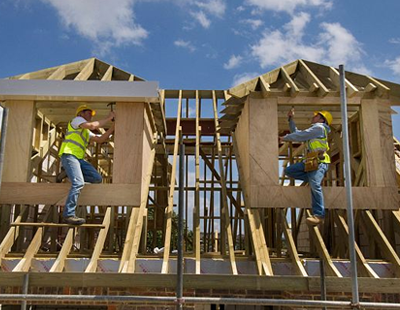As the government continues to assess the future state of building regulation in the UK, developers and leaseholders continue to remain in the dark. With the latest amends to the Building Safety Bill reaching the Committee Stage in the House of Lords, the more topical issues have been the recent announcements emerging from Michael Gove’s office.
This includes a letter from Gove to developers, manufacturers and building owners demanding they foot the £4bn bill estimated to cover the unsafe cladding repairs. On February 14, Gove announced another flurry of new measures. These include blocking developers from the housing market by refusing them planning permission and building control sign-off, should they refuse to contribute to the costs of remediation.
The government’s plans appear tough on paper but there remain deeper legal issues that are yet to emerge. On February 23, the Housing Building Federation wrote to the Secretary of State setting out the industry’s response to the said proposals; namely a commitment to resolve fire safety concerns on all buildings over 11m, to remediate buildings dating back to 2000 and to withdraw from the Building Safety Fund.
Cladding crisis
Since the tragedy of Grenfell in 2017 residential leaseholders across the country have been rightly concerned as to whether their homes were vulnerable to the same experience. Adding to leaseholder frustration, buildings between 11 – 18m were not covered by the government’s Building Safety Fund, leaving some people with spiralling insurance costs, inflated service charges and a large bill to replace the unsafe cladding. This also includes fire safety issues being discovered behind unsafe cladding, such as flammable insulation and inadequate cavity barriers.
The announcement on Valentine’s Day from Michael Gove is a positive first step, a love letter of sorts, in clarifying the financial futures for leaseholders and developers alike. The proposals offer greater protection to leaseholders who otherwise would need to bear the brunt of cladding remedial costs; a burden that is widely viewed as no fault of their own.
This update supplements the changes being brought by the Building Safety Bill. It includes extending the legal timeframe for building owners and developers to thirty years, in which they can take legal action against manufacturers who provided defective products in homes which are now unfit for habitation. Although the proposals provide more transparency there are still some questions left to be answered, specifically as to how the government will enforce such new measures.
What next for leaseholders?
As tends to be the case with these kinds of government proposals, initial statements of intent and hard-line measures lack robustness and detail. The Secretary of State said that he is prepared to take “all steps necessary” to secure the funds from developers but it remains unclear as to what this means in practice, particularly when the scope of works will be uniquely different for each building.
Some of the steps mentioned include restricting developers from access to government funding and future procurements, the use of planning powers, pursuing firms through the courts, and the imposition of “a solution in law if needs be”.
This sort of language may sound meaningful to everyday leaseholders but in reality it does not guarantee that developers will be making pay-outs over cladding any time soon. Without a rigorous legal framework comprised of specific policies and timelines, the issue of cladding costs is likely to drag out.
It is also unclear what the position is for those leaseholders who are also owners of the buildings or what happens when leaseholders simply don’t have the funds to undertake remediation works notwithstanding a contribution from the Building Safety Fund.
More government powers over developers
The government continued with its hard-line stance against developers with further announcements on February 14. One of these included blocking developers and product manufacturers that do not help fix the cladding scandal, as mentioned above.
Developers can also be sued where they have used shell companies to manage specific developments, so they can avoid taking responsibility for their actions.
It is, however, not clear how non-UK based companies will be compelled to pay towards the cost of remediation. There is also the likelihood of increased satellite litigation. Developers are likely to make claims against contractors, sub-contractors and sub-consultants for financial contributions to the remediation costs. There’s also the risk of legal action taken against developers for non-compliance, especially after a government review stating that indifference and ignorance led to a “race to the bottom” in building safety practices, with developers prioritising saving costs over safety.
Finally, the Building Safety Bill will allow building owners and landlords to take retrospective legal action against manufacturers who used defective materials on a home, which has now been found unfit for habitation.
Landlords would be able to take legal action stretching back to 30 years. This new proposal gives landlords more power to hold manufacturers to account. The question is how viable this is would be in practice. How would leaseholders be able to access these records and prove that manufacturers used faulty cladding? If they used shell companies to mitigate responsibility, it would be even more difficult for leaseholders to find out who to hold responsible.
The future of building safety and dispute over unsafe cladding is yet to be solved despite reassurances from Michael Gove. With the government’s Building Safety Bill bringing in more checks and regulations there is no doubt that the building safety will be strengthened in the UK. More responsibility for fire safety will be passed onto those involved in the construction of buildings.
For now, leaseholders and developers will have to hold tight and keep a close eye on new announcements, keep good records of systems and a check on professional indemnity insurance.
*Priya Sejpal is property litigation expert and senior associate at insurance and commercial property specialist BLM *
Want to comment on this story? Our focus is on providing a platform for you to share your insights and views and we welcome contributions.
If any post is considered to victimise, harass, degrade or intimidate an individual or group of individuals, then the post may be deleted and the individual immediately banned from posting in future.
Please help us by reporting comments you consider to be unduly offensive so we can review and take action if necessary. Thank you.




/MichaelGove2-400x310.png)










.png)





Join the conversation
Be the first to comment (please use the comment box below)
Please login to comment